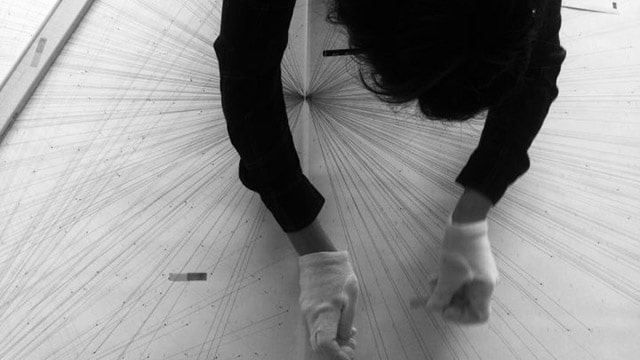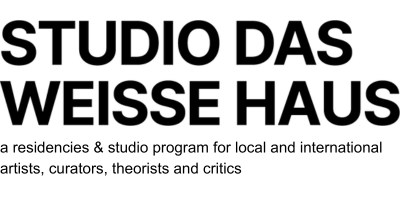Weekly Conversations... with Lucia Simon Medina

As we can see in your biography – you have already spent some time in Vienna last year. Did you start some research at that time, and is it connected to your current project that you will work on during your residency at das weisse haus? I spent three months last year as an Artist in Residence thanks to KulturKontakt Austria in Vienna. At that time my intention was to conduct a research at the Arnold Schönberg Center to develop a project focused on democratic structures, by taking a reference to the twelve-tone technic and it’s association to prime numbers. After a while, the research has exclusively turned into the history of the prime numbers in the context of Vienna. I went to AÖAW to see the “Magnus Canon Divisorium” by Jakob Philipp Kulik and learned about tables of prime numbers and factors by Anton Felkel. What fascinates me about the factor tables written, first, by Anton Felkelin the 18th century,and then continued by Jakob Philipp Kulik in the19th Century is that they were mostly mentally computed and codified by replacing numbers with alphabets in order to save space on the paper tables. These tables were written accordingly to one person´s intellectual capacity and time disposal, with no much help of machinery, also they are quite difficult to read because one has to get used to the codification/substitution of numbers by different alphabets they employed. Nowadays the complexity of factoring numbers (decomposing numbers into their prime factors) is the base of the RSA public-key cryptosystem used in the Internet to transfer classified data and electronic payments. The RSA was one of the first public-key cryptosystem system invented at the end of the 70´s. Since then, I have been inspired by those ideas and I have been trying to visualize them in a project called The name on the tip of the tongue, which is an installation that highlights cryptography and numbers as basic aspects of contemporary life, which however remain under the surface of the design. It analyses, through calculation and drawing, on one hand the first public key cryptographic system RSA, which base are two prime numbers close to each other and randomly chosen to multiply, and on the other hand the Goldbach Conjecture, which proposed that any even number greater than two can be written as the sum of two prime numbers. The name on the tip of the tongue is also a spatial investigation into democratic structures, which makes reference to the first list of prime numbers and factors written by Anton Felkelin 1776 up to the number 144,000. The results of this investigation are an installation with 15 lists and a diagram of 15 square meters. During my time at das weisse haus I continue working on this project through a series of 15 notations that will help read the structure of the diagram and they might also be the script for a future performance.
In your artistic practice we can find a really interesting connection between numbers and visual form, how do you connect them?Numbers can be anything, I would say almost everything can be translated into numbers and probably it is one of the most universal languages. I use them as parameters to create forms that I later codify and prepare to be transformed into something else, like movement, sound and time sequences. I am very interested in numbers in general, because they are able to express quite well the very basic qualities of language like rhythm, musicality, pause, intonation, etc., which are the more abstract aspects of languages, nevertheless they play very important roles in communication
process. Also, I think, through numbers I am able to organize time easily. In fact, in my work, I only use prime numbers, those which can be divided by one or by themselves, because they are an unsolved problem of the mathematics.They appear as an irregular pattern and there is not a formula known yet that can predict the frequency how they appear. Somehow they are like raw material for a new language to be codified or the other way around, a language its codification has not been discovered yet. Either way, we do not really know what do they mean or where could they take us to. This uncertainty interests me, something that we do not know what is for and it is yet placed outside of the exploitation of knowledge.
Most of your works are with exact aesthetic forms and with deep intellectual meaning. Are you more concentrated on research process or on the visual identity of your projects? Although I used to be more concentrated on research processes, I realised that the visual identity of the project comes along during the research and it is important to find the balance between both. I can not separate them, the visual identity is part of the process as well, and involves other kind of research.
Performative practices are also present in your research, how do you connect them with your concept? I find performances very interesting, they can be live or documented. I think this is what transcends the visual sense into multi senses, like to hear, to touch or to smell. I believe nowadays the use of visual sense is exploited. We are very undisciplined with our eyes and the amount of time we invest looking at things that do not really interest us is depressing. The over exposure of information has brought us to a kind of limbo status, in which the act of looking becomes the synonym of seeing and further more, of understanding. Meanwhile, we become other kind of information for what we are not really trained or patient enough to analyse so quickly, so we just let it go.There is a kind of denial towards complexity, even though the world today is incredibly complex. That is why I am interested in the format of audiovisual compositions for installations, by displaying different aspects of documented performances, it can be only sound, or mute moving images, or the relation between sounds and moving images from different performances. When I collaborated with professional dancers and musicians I was interested in deconstructing the performances and trying to give information in equally amount of sound and as of image. Every act of work is a performative one, since you need your body to carry it in space and time. Our bodies are always conditioned by the kind of work that we have to be engaged and I am very influenced by ancestral practices as recollecting or agriculture in order to survive, works routines that implies the condition of our bodies. And I have been interested in experimenting them myself through the artistic practice. Most of my projects are based on a work routine, a task that I repeat day after day for a certain period of time, this implies that my body is getting used to performing the task and leaving time traces into the work. That is why drawing plays a central role in my practice, I am interested in drawing and notation in order to register processes and time lines.
Interviewer for studio das weisse haus: Bojana Stamenkovic
